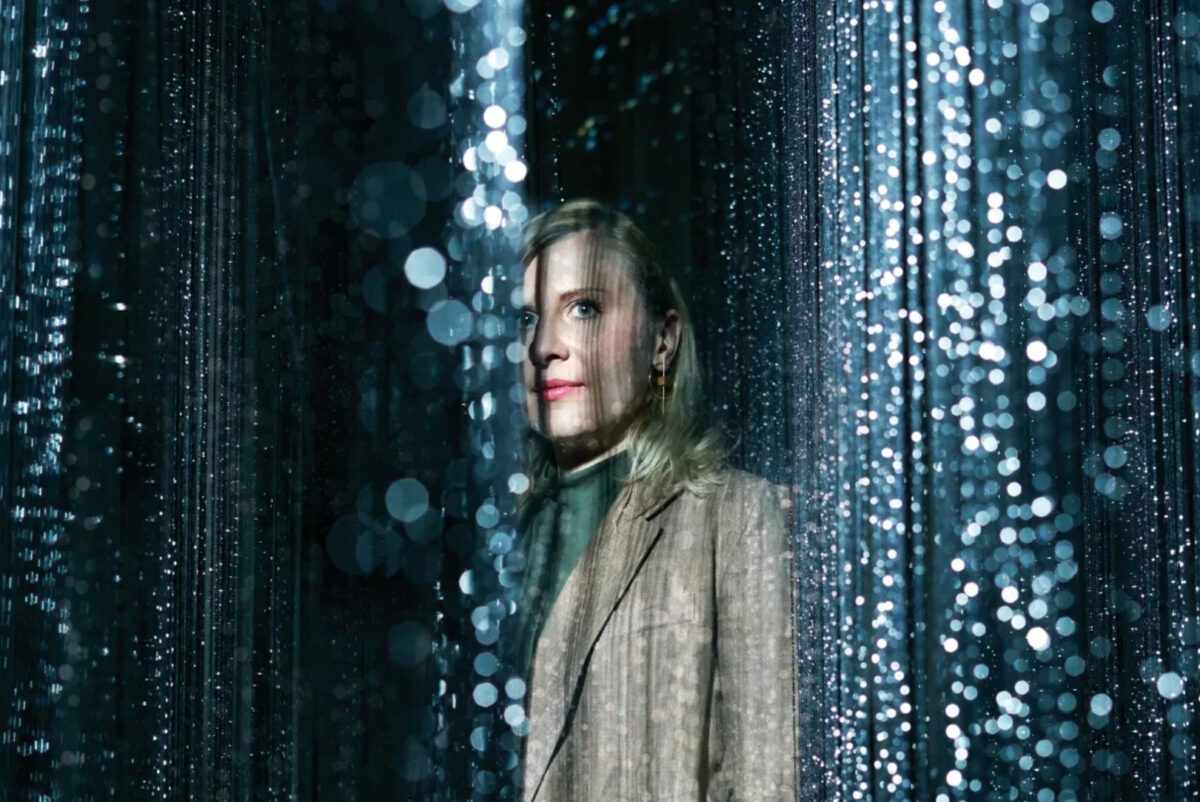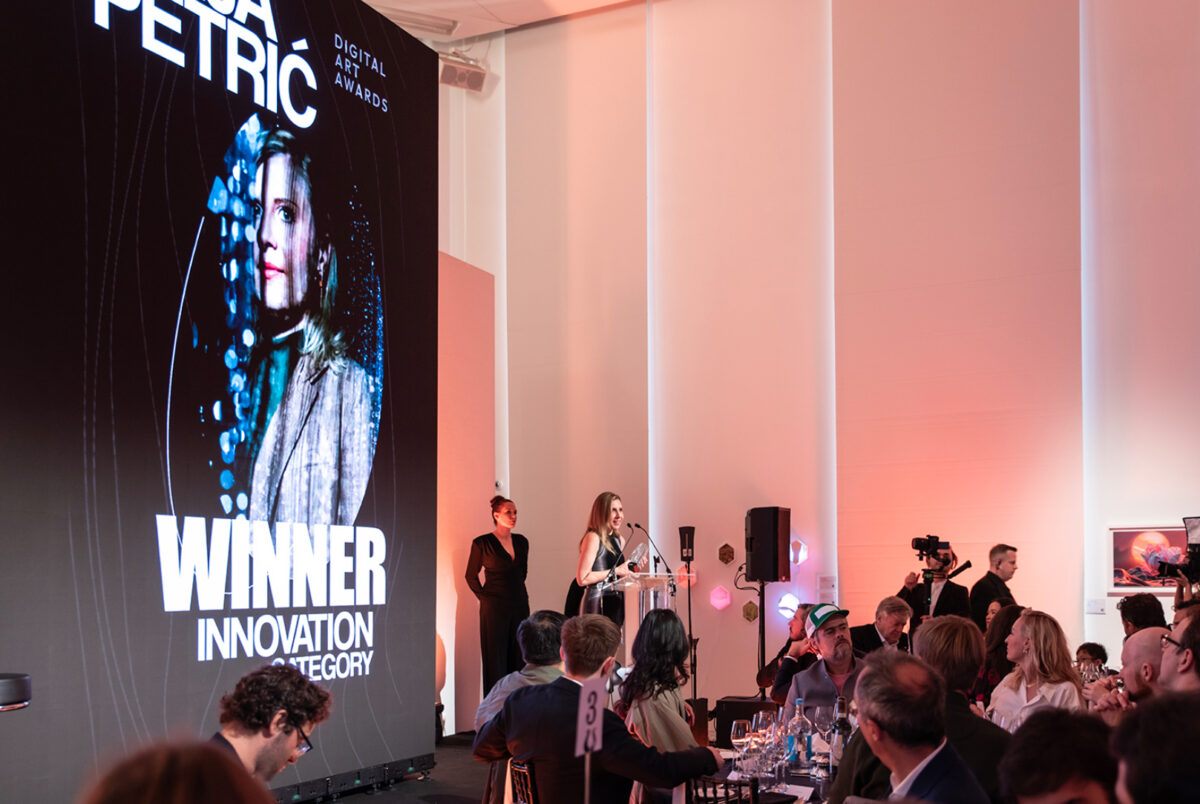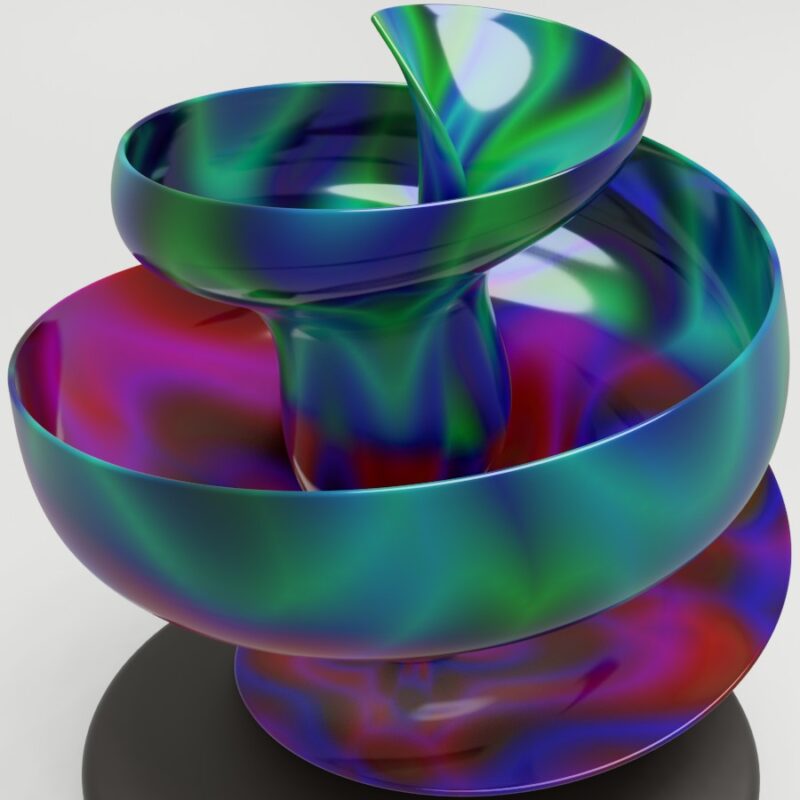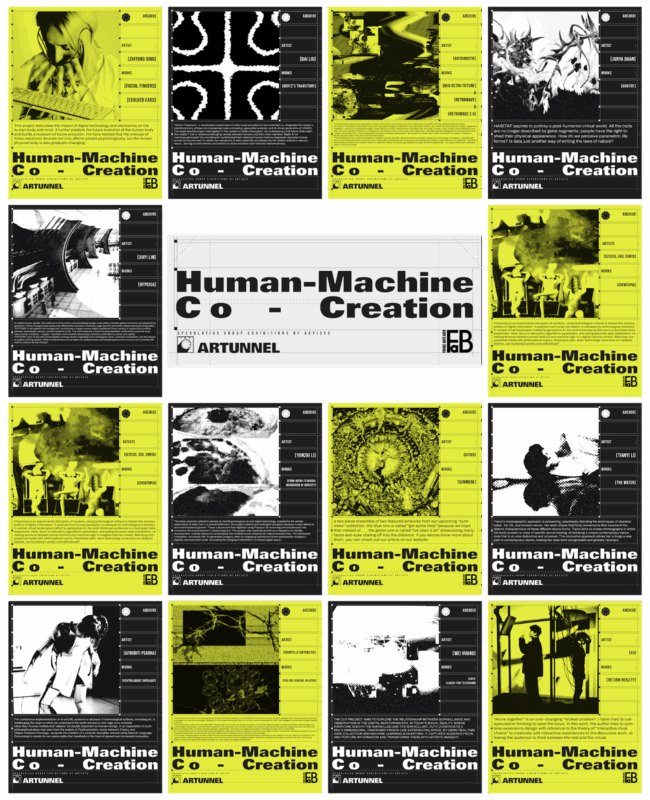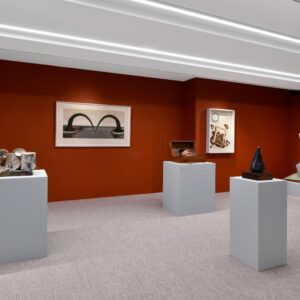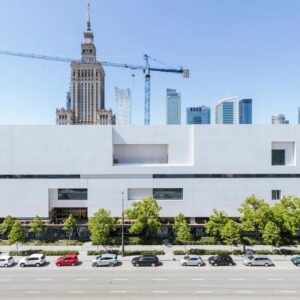Digital art is no longer a niche, it’s a movement. From glitchy GIFs to immersive virtual worlds, today’s artists are using pixels, code, AI, and cutting-edge technology to create work that challenges conventions, sparks emotion, and redefines what art can be.
In this interview series, we delve into the lives and minds of the people shaping the world of digital art; from pioneering artists and forward-thinking technologists to passionate collectors. Together, we’ll explore what it means to create, curate, and live at the forefront of a rapidly evolving digital landscape and where the future of art might be headed next.
MAJA PETRIC – The digital poet preserving thoughts, feelings and living ecosystems
Fresh off her win for the Digital Art Awards for Innovation presented by HOFA Gallery and Phillips. We speak to award winning contemporary artist Maja Petric, known for her immersive installations and sculptures that merge light, sound and cutting edge technologies such as; ai, data and robotics. Often exploring themes of mortality, human existence, interdependence and climate change. Her pieces invite us to feel rather than just observe, blurring the lines between viewer and artwork, machine and muse – which continues to push the boundaries of what digital art can be.
Could you describe your artistic practice and the themes you explore within your art?
My practice is rooted in creating immersive, emotionally resonant experiences that reconnect people to nature, to each other, and to a deeper sense of aliveness. I work with light, space, artificial intelligence, and real-time environmental data to build sculptural installations that behave like living environments.
The themes I explore often revolve around biophilia, memory, impermanence, and interconnectedness—particularly in the face of environmental loss. I’m interested in how fleeting sensory experiences of the natural world can be preserved not as static documentation, but as living, emotional experiences.
Each of my works begins with the sublime elements of nature. I draw people in by evoking a universal, visceral connection to the environment. But once immersed, the layers of each piece reveal deeper themes: mortality, interdependence, climate change, and the need for collective action. I push the limits of emerging media to make these connections felt—physically, emotionally, and intuitively.
Where did your interest in light stem from, and why did you decide to combine it with technology, data, and AI?
I grew up during the war in Croatia, which shaped how I understand disconnection and longing for unity. Early on, I turned to visual and performance art in public spaces as a form of emotional and political expression. When I moved to the U.S. in 2001 on a scholarship, I was searching for a way to bridge the distance between where I came from and where I was.
What I wanted to do—create connection across time, space, and culture—wasn’t possible through traditional mediums. So I turned to technology. One of my first projects was a tele-performance that linked public spaces in New York and Zagreb in real time. It felt radical: not using tech for distance, but for presence.
Since then, I’ve continued transforming advanced technologies; AI, generative algorithms, real-time environmental data, and interactive light—into poetic tools for emotional connection. My aim is to build environments that feel alive and responsive, inviting people into a shared sense of presence and wonder.
Who or what has influenced your artistic journey the most?
James Turrell has been a foundational influence. His treatment of light as something sculptural, perceptual, and deeply spiritual helped me see light not just as medium, but as presence. His work taught me how light can reshape our experience of space—and ourselves.
Cornelia Parker is another artist whose work has stayed with me. Her ability to imbue material transformations with emotional and conceptual weight taught me a lot about how to use form as metaphor. I admire her precision, restraint, and the haunting clarity of her ideas.
How do you balance the technological aspect of your work with the emotional and human experience you wish to convey?
I use technology as a tool for empathy, not spectacle. It’s meant to stay in the background – to quietly mediate experiences and stories that couldn’t exist without it. Whether through generative or responsive systems, technology enables me to create emotional environments that shift in real time, evolving with the viewer and with the world around them. My goal is always for the tech to disappear into the feeling.
If someone leaves the installation feeling more connected, more reflective, or more alive – then the balance is working. For me, emotion is the true interface.
Could you explain the concept of your Specimens of Time series?
Specimens of Time is an evolving series of immersive, generative light sculptures that preserve the emotional and sensory imprint of fragile ecosystems. As the pristine nature disappears, these works preserve its memory – data-driven light sculptures capturing fragile ecosystems, sealed as artifacts for a future without them.
Each sculpture uses live environmental data – such as ocean temperature, air pollution, or snowfall, to animate light inside a sculptural form. The result is an environment that pulses, flickers, and breathes in rhythm with the changing Earth.
These are not illustrations of climate data, they are living emotional records. Each piece begins with the sublime: the beauty of a rainforest, a coral reef, a glacial horizon. But as people linger, they begin to sense the tension underneath – the fragility, the transformation, the loss.
The sculptures function as sensory artifacts of time, memory, and environmental urgency. They serve as both a tribute and a warning – capturing the essence of what may soon be gone, and asking us to reflect on what it means to witness, preserve, and care.
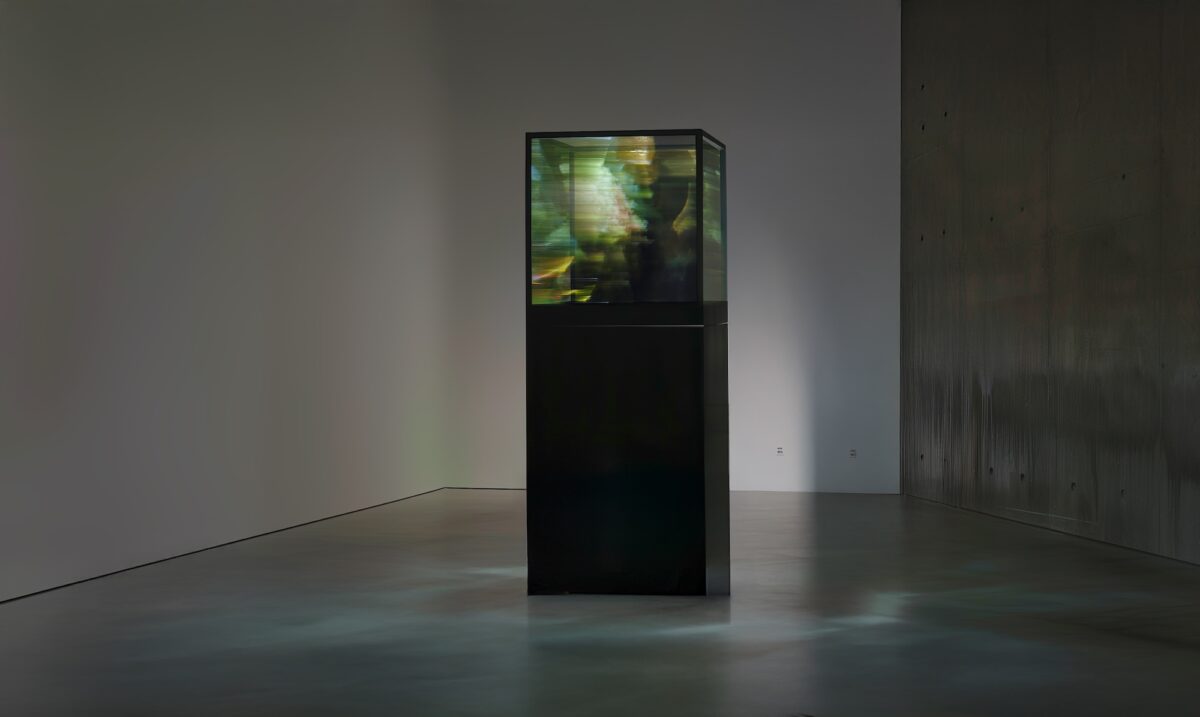
What do you hope to achieve with your art?
I hope to create spaces where people feel deeply – spaces that pull them into the present moment and reconnect them to something larger than themselves. My work isn’t about answers; it’s about feeling. It’s about opening up space for reflection, emotion, and awareness.
I believe that emotional connection is a precondition for change. If someone pauses, breathes deeper, feels something shift inside, or starts to ask questions – that’s the beginning of transformation.
How did it feel to win The Digital Art Award for Innovation for your Specimens of Time series? What do you plan to create with the HOFA Gallery & Hivemind Culture Fund prize fund?
It was incredibly meaningful. Being recognized for innovation affirms the importance of experimental, emotionally driven work that doesn’t fit easily into categories. Beyond the personal recognition, this award provides something vital: it offers spotlight and context for work that is often ahead of the curve, difficult to define and sometimes hard to fully understand at first encounter. It places this kind of art within a cultural framework that helps spread the language around it and fosters early adaptation. That visibility expands the work’s ability to reach broader audiences, prompting deeper reflection and creating the possibility for wider impact – especially in areas like climate consciousness, memory, and collective awareness.
The award supports the development of new Specimens of Time sculptures which will focus on the other threatened ecosystems, like the Red Sea coral reefs and the Amazon rainforest. I’m also working on embedding memory into these sculptures using AI – creating systems that evolve over time and hold emotional traces of those who engage with them.
Are there any specific technologies that you are particularly excited about or experimenting with?
Absolutely. What excites me most is the poetic potential of AI – not just for problem-solving or automation, but for encoding memory, emotion, and perception into living, evolving artworks. I see AI as a medium for crafting time-based experiences that carry presence across generations – stories that adapt, remember, and grow.
Right now, I’m working on a new project in collaboration with my longtime technical partner Mihai Jalobeanu and a robotics system he is training. We’re developing a sculptural installation that integrates AI, robotics, and bio-responsive materials to create a work that evolves physically over time. The sculpture won’t just react, it will sense, remember, and shift its form based on environmental data and human presence.
The early phase of this project explores how a sculpture might rebuild the atmosphere of a vanishing landscape based on individual memory. But in the future, I envision going even further – growing these atmospheres. Using advances in AI and bioengineering, we could create artworks that physically generate elements of lost environments. Imagine a sculpture that doesn’t just simulate the air of a rainforest or the feel of glacial mist but one that grows it. Living systems embedded in the piece would respond to environmental and emotional inputs, creating real-time, sensory-rich atmospheres drawn from both memory and data.
This fusion of AI, robotics, and bioengineering opens a path to emotionally intelligent environments – art that holds and expresses memory not as representation, but as living presence. For me, the future of art lies in what these technologies can feel like, not in how advanced they are but in how deeply they can move us.
What do you think the future of digital art holds? Will it stand the test of time?
Yes. we are in the midst of a profound shift. Digital art is expanding how we tell stories, how we remember, and how we feel. It’s breaking boundaries between disciplines and collapsing the space between audience and artwork.
But lasting impact requires depth. It’s not enough to work with the latest tools, we must also master the craft of creating meaning through them. That’s the challenge and the promise of digital art.
The works that endure will be the ones that transcend their medium, those that ask urgent questions, stir emotional truth, and help us connect across time, space, and memory.
Follow @maja_petric
